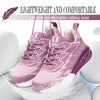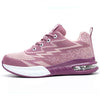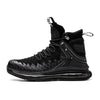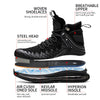The Ultimate Guide to Choosing the Best Lightweight Work Boots for Your Job
How to Choose Lightweight Work Boots for Work
For people working long time standing, good work boots are very important. I also stand all day, so I know how painful if shoes are not comfortable. Now there are too many work boots in market, really hard to know which one is best. Here I want to share some idea about lightweight work boots, hope can help you make choice easier.
Why Light Boots Are Good
Heavy boots look strong, but after you wear a few hours, legs and feet feel very tired. If boots are lighter, walking and working all day will feel more easy. Sometimes I also need walk fast, climb stairs or bend body, light boots help me move better. Also, when weather is hot, heavy boots always make feet sweat a lot. Light boots with mesh can help keep feet dry.
How To Pick Lightweight Work Boots
First you need to think about what work you do. If your work place has many heavy things, better to use steel toe boots, can protect your feet. If you just work in office or store, soft toe boots is ok, more light and soft.
Second, I think fitting is most important. Before I always buy wrong size online, after wearing feel too tight or too loose, walking hurt feet. Now I only buy boots with big toe room, heel not slide, and middle part feels close to foot.
Material also important. Some people like leather boots, very strong, but a bit heavy. Nylon and mesh boots are very light, summer time is best. For sole, try bend the boots, good boots sole is soft but not too thin.
Steel Toe or Composite Toe
Many friends ask me which one better. Steel toe is old style, price is cheaper, very strong. But steel toe is heavy and cold in winter. Also, if your work has electricity, steel is not safe.
Composite toe boots are new type, use plastic or fiber, more light, also protect toes, not conduct electric, but price higher. If your job is high risk, maybe steel is more safe, if just normal work, composite toe is enough.
Some Features You Can See
I suggest to pick boots with:
-
Non-slip sole, for safety
-
Good air flow, feet not hot
-
Soft insole, for long time standing
-
Laces or straps, easy adjust tightness
Some boots can also wash or change insole, very convenient.
Some Boots I Used or Friends Recommend
-
TFWMGV K7 plus: steel toe, not very heavy, leather, very strong, use long time no problem
-
TFWMGV K7719: steel toe, also waterproof, not easy get wet, wear in rain no problem
-
Merrell Work Moab 2 Vent Mid: look like sport shoes, mesh very cool, steel toe, feel very light
-
Reebok Work Sublite: sport style, light, sole not slippery, good for warehouse job
Boots and Shoes, What’s Different
Boots cover more ankle, protect more, but also more heavy. Work shoes is easy walk and run, but not very safe for heavy job. I use boots for factory, shoes for delivery work.
Take Care of Work Boots
After work, remember clean boots, if leather use oil sometimes. Wet boots put in ventilated place, do not put in sun. If broken, better buy new pair, old boots will hurt feet.
Conclusion
Lightweight work boots really help make working day more easy. Everybody’s job is different, so better try different style before buy. I hope my sharing can help you find comfortable and safe work boots.
-
Posted in
lightweight steel toe boots, lightweight work boots, mesh work boots, steel toe tennis shoes




